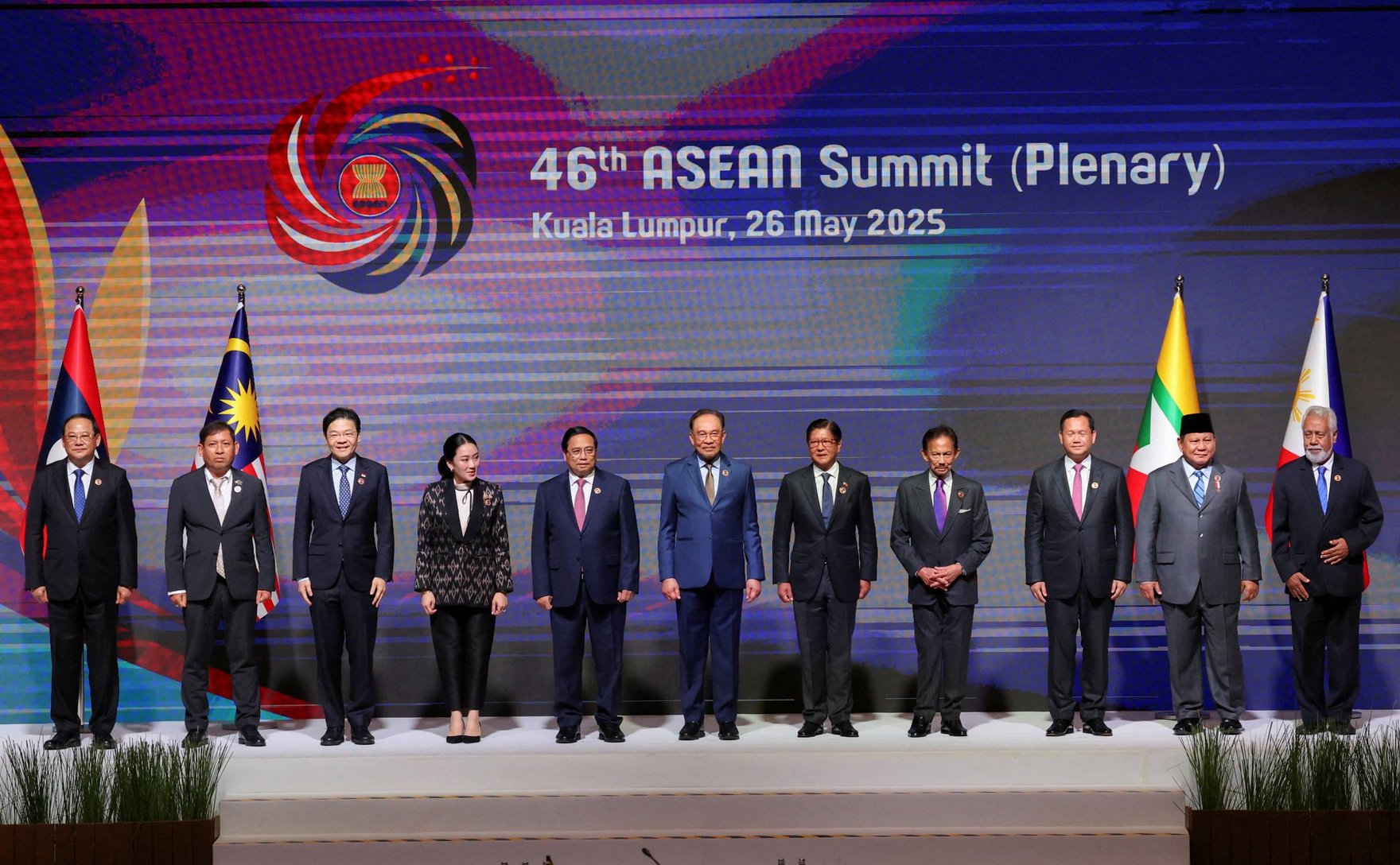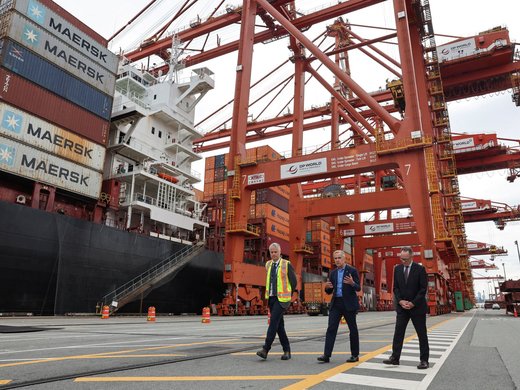This op-ed is the first publication under CIGI's Next-Generation Economies: Middle Powers in a Changing World, an expansion of the Digitalization of Trade program.
The global economic order is undergoing a seismic transformation. Technological acceleration, geopolitical realignments and climate imperatives are collectively disrupting long-standing trade and industrial paradigms. For Canada, these shifts expose a persistent vulnerability: excessive dependence on the United States as its principal trade partner. As protectionism intensifies south of the border and the efficacy of multilateral institutions erodes, the need for strategic diversification is no longer a matter of aspiration but one of national resilience.
Southeast Asia — through the Association of Southeast Asian Nations (ASEAN) — represents a critical yet underleveraged avenue for Canada’s next-generation trade strategy. This 10-nation bloc not only embodies economic dynamism and digital innovation but also offers a partnership grounded in mutual interest in stability, openness and sustainable development. In light of Canada’s Indo-Pacific Strategy and the shifting architecture of global trade, deepening ties with ASEAN is both a timely and forward-looking imperative.
Canada’s trade relationship with the United States, while historically foundational, has become increasingly precarious. The resurgence of economic nationalism, the rollback of multilateral commitments and an ever-so-disruptive second Trump presidency have amplified risks to Canadian economic security. The recent trend toward reshoring, punitive tariffs and supply chain weaponization underscores the limitations of overreliance on a single market, particularly one marked by growing strategic unpredictability.
ASEAN, by contrast, offers a compelling alternative grounded in geostrategic complementarity. As a bloc, ASEAN commands a combined GDP exceeding US$3.8 trillion and a population of more than 677 million. It sits at the nexus of the world’s fastest-growing economic corridor, with increasing relevance in global manufacturing, digital services and clean technology adoption. Its consistent commitment to multilateralism and regional stability aligns with Canada’s normative trade and diplomatic posture.
ASEAN’s significance extends well beyond traditional metrics of trade volume and market size.
Southeast Asia’s Next-Gen Potential
The announcement of formal negotiations toward an ASEAN-Canada Free Trade Agreement, with a shared objective of conclusion by the end of 2025, signals an inflection point. This is not merely an economic opportunity but also presents a strategic hedge. For Canada to retain relevance and resilience in an era of multipolar economic governance, ASEAN must move from the periphery to the core of its international trade architecture.
ASEAN’s significance extends well beyond traditional metrics of trade volume and market size. The region is undergoing a profound transformation into a next-generation economic hub, defined by accelerated digitalization, rising innovation capacity and ambitious regional integration frameworks. Central to this evolution is the ASEAN Digital Economy Framework Agreement (DEFA), which aims to establish a harmonized digital infrastructure, regulatory coherence and cross-border data flows positioning ASEAN as a global standard-setter in the digital economy.
This transformation presents a strategic convergence with Canada’s strengths in digital governance and advanced manufacturing. Canadian firms are well positioned to contribute to and benefit from ASEAN’s projected digital economy growth, which is expected to exceed US$1 trillion by 2030. Moreover, ASEAN’s youthful demographics and expanding middle class are generating endogenous demand for digital services, clean energy solutions and agri-tech — all areas where Canada holds a comparative advantage.
Crucially, ASEAN is not simply a market; it is an institutional actor actively shaping the rules, standards and platforms of future economic cooperation. For Canada, engagement with ASEAN is an opportunity to participate in co-creating the very frameworks that will govern global digital trade, technology deployment and industrial transformation in the decades ahead.
Canada’s engagement with ASEAN must also be understood through the broader lens of national security and strategic resilience. In an era marked by intensifying geopolitical rivalry, technological bifurcation and supply chain vulnerabilities, ASEAN — as a stable and non-aligned bloc — offers Canada a critical platform for reducing exposure to concentrated dependencies, particularly in sectors such as semiconductors, critical minerals, digital infrastructure and emerging technologies.
Recent developments underscore this strategic potential. Canada and the Philippines are moving toward a Status of Visiting Forces Agreement, signalling a deepening of defence cooperation that complements economic ties. Similarly, ASEAN’s increasing attention to cyber governance, maritime security and cross-border data flows creates a foundation for broader collaboration on digital sovereignty and technology governance — areas of growing strategic concern for middle powers. This dual-purpose engagement, both economic and strategic, reflects the kind of multidimensional statecraft required to navigate an increasingly volatile international environment.
Canada’s Strategic Opportunity
To capitalize on ASEAN’s strategic potential, Canada must adopt a coordinated, proactive approach that integrates trade, technology and security policy. First, the federal government should prioritize the swift conclusion of the ASEAN-Canada Free Trade Agreement and ensure it includes strong digital and innovation-related provisions aligned with ASEAN’s DEFA ambitions. Parallel to this, Canada must increase its diplomatic and commercial footprint in Southeast Asia through expanded missions, trade offices and policy attachés focused on technology and industrial cooperation.
Joint research platforms and regulatory dialogues can help build mutual trust and shape interoperable standards.
Second, targeted public-private initiatives should be established to support Canadian firms entering ASEAN markets, especially in sectors such as clean energy, agri-tech, artificial intelligence and advanced manufacturing. Mechanisms such as export financing, regulatory cooperation and co-development funds can facilitate this engagement.
Finally, Canada should pursue structured collaborations with ASEAN on critical digital infrastructure, data governance and cybersecurity. Joint research platforms and regulatory dialogues can help build mutual trust and shape interoperable standards.
In a volatile global environment, Canada must act with strategic foresight to safeguard its economic and national security interests, and ASEAN presents a rare convergence of opportunity. By deepening its engagement with the bloc, Canada can move beyond reactive diversification to shape the frameworks of a more resilient, inclusive and multipolar economic future. The question is no longer whether to engage, but how urgently and how ambitiously.




